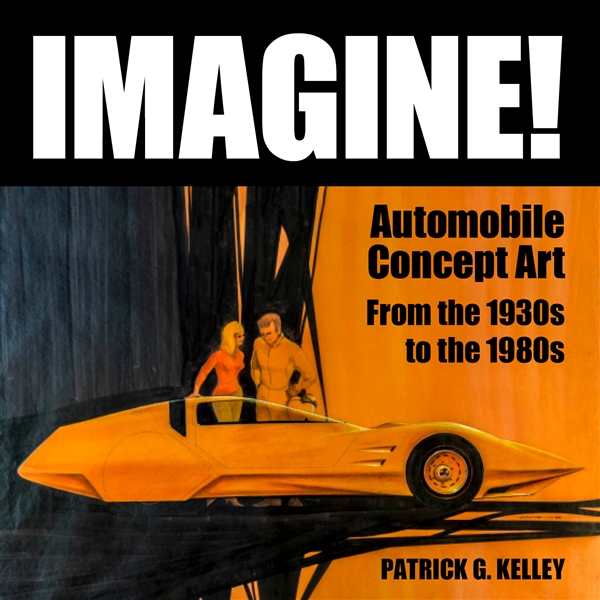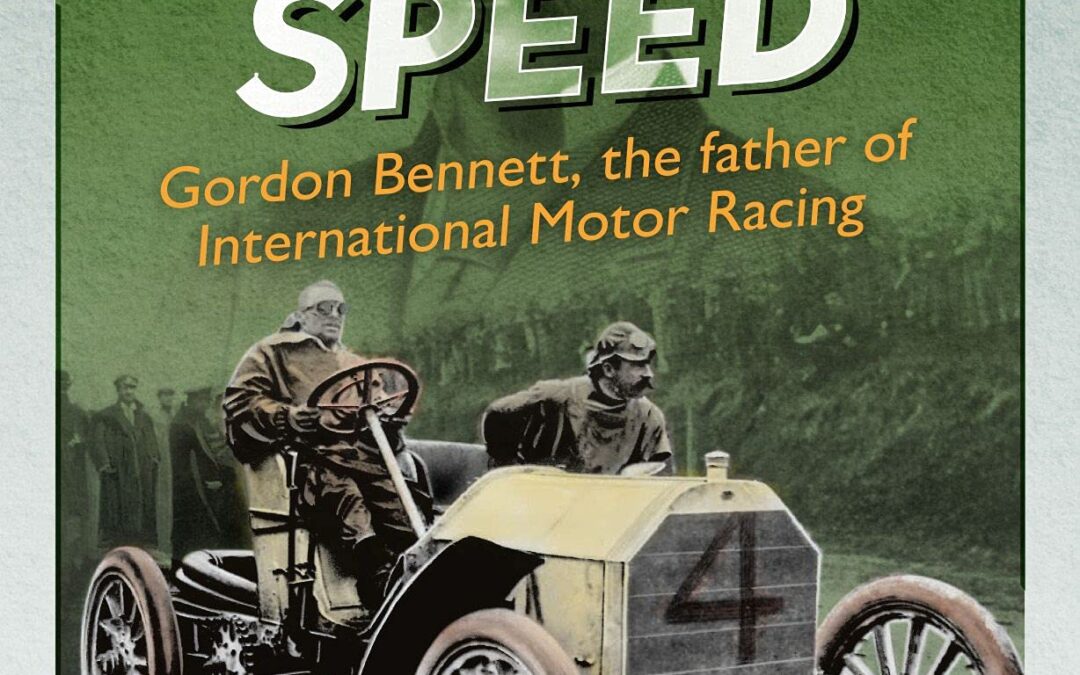
A complete history of the main motoring events and races of the Gordon Bennett Cup.
James Gordon Bennett Jr. (1841–1918) was the spoiled only son of the millionaire founder and publisher of the New York Herald. In addition to taking over publishing duties from his father, Bennett led a dynamic and daring life. He was a tireless supporter of the pioneering fields of technology and sports, always with speed in mind. In 1899, fascinated by new motor cars, he founded the Gordon Bennett Cup. The inaugural race took place in 1900, and though only three countries entered the inaugural race in 1900, it was the beginning of a massive phenomenon. Despite challenges of widespread anti-car sentiment, bureaucracy, speed limits, safety, and design challenges, over the next few years, Bennett grew spectatorship from less than one hundred to eighty thousand.
Bennett’s dedicated promotion of early motor-car racing gave a boost to the global auto industry and provided a foundation for the international racing scene that still excites us more than a century later. Every Gordon Bennett Cup race is documented here with an account of the drivers, the cars, the courses, and the thrilling highs and lows of the events
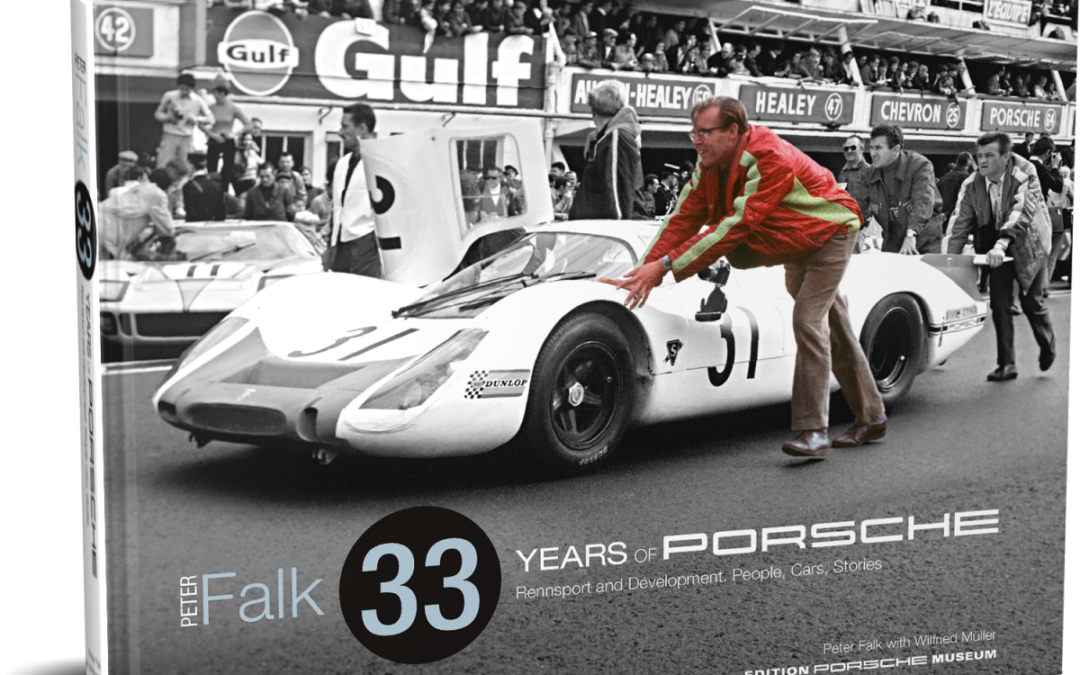
This edition of the book is limited to only 150 numbered copies, contains a hand signature of Peter Falk and comes in a luxury linen slip case.
Peter Falk and Porsche, 33 years of passion and devotion: As their race director and one of the leading figures in their experimental department, Peter Falk contributed significantly to the character of the sports cars from Stuttgart-Zuffenhausen – both on the race track and on the road.
From the first 901 right through to the very last air-cooled Type 993, every Porsche 911 bears the signature of Peter Falk. He joined the company in 1959 and quickly rose through the ranks to head various testing departments. In the mid-sixties, Falk also took over the tactical and technical leadership of the factory’s “Rennsport” team. In 1981, he was appointed as race director and led Porsche throughout its most successful era of competition. “His” team won at Le Mans, became World Sports Car Champions, conquered the Paris-Dakar Rally, and was victorious in Formula 1 with the TAG Turbo engine.
In this book, Peter Falk tells of his years with Porsche. A highly respected person in the world of engineering, he relates how it all began at Porsche – when race drivers and engineers huddled together in a shepherd’s hut at Weissach to discuss suspensions, what the Porsche crew experienced during endless testing adventures in both the Arctic Circle and the Sahara, how the race cars at Le Mans roared to the start over country roads, and how a test drive with a Porsche 908 almost cost him his life. He shares his views on every Porsche race car, from the 904 Carrera GTS to the 962C, and describes the race drivers who competed during his reign: Hans Herrmann, Jacky Ickx, Vic Elford, Derek Bell, Hans-Joachim Stuck and Jochen Mass to name just a few. Falk provides a good, long look into the inner workings of Porsche.
Peter Falk shared his personal Porsche stories and fascinating insights with the author Wilfried Müller. The images in this book come from Peter Falk’s private collection, from the Porsche Historical Archive in Stuttgart-Zuffenhausen, and from the vast cache at McKlein Photography. Along with the contributions from former colleagues and race drivers, these images and stories give an in-depth portrayal of Peter Falk’s 33 years with Porsche.

Meet drag racing legend and pioneer Shirley Shahan, the Drag-On Lady!
As the first woman to win an NHRA national event when she was named Top Stock Eliminator at the 1966 Winternationals, Shahan blazed a trail for women in drag racing. During the golden era of drag racing, it was rare to find diversity in the sport. Shahan is what’s commonly known as a living legend.
In a career that spanned the 1950s and into the early 1970s, Shahan drove 1956 and 1958 Chevys and was one of the lucky few who was able to purchase one of the rare 1963 Chevrolet RPO Z11 Super Stockers. Later, when she was driving for Plymouth and Dodge, Shahan made the name Drag-On Lady both famous and feared. She then moved to American Motors and raced very successfully with the new SS/AMX.
From 1958 to 1972, Shahan set records and won numerous awards. She was inducted into the International Drag Racing Hall of Fame, Super Stock Magazine Hall of Fame, and Mopar Hall of Fame, and she was honored with a lifetime achievement award at the Bakersfield racetrack. In addition, Shirley won the Top Stock category at the very first March Meet at the legendary the Famoso Raceway track near Bakersfield, California, which made her the first person (male or female) to do so. In 1966, she was the named one of Hot Rod magazine’s Top 10 Drivers.
She raced against the best drivers during the golden age of drag racing and more often than not blew off the doors of her opponents. She had a fierce passion for winning, and in this book, you’ll feel what it was like to be behind the wheel as she steers you through her illustrious career. Fasten your seat belt; it’s going to be a wild ride.
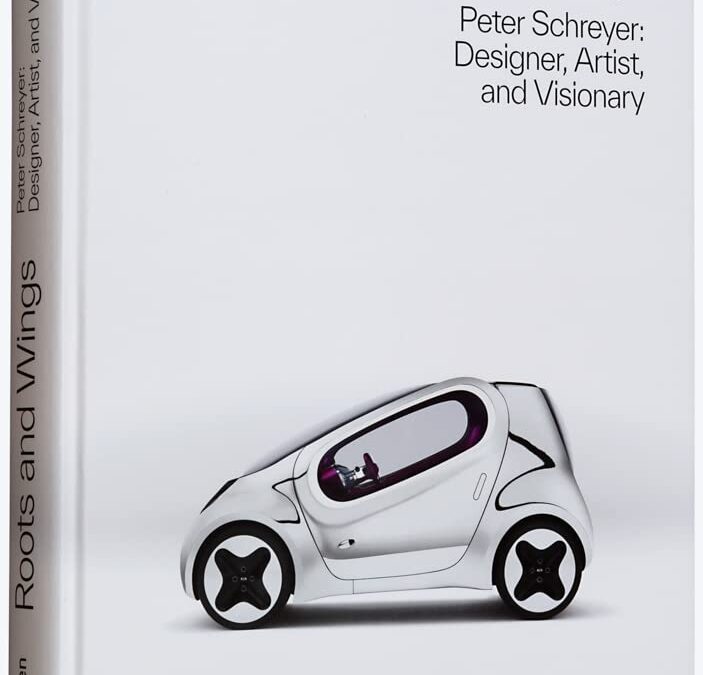
Roots and Wings explores the life and work of Peter Schreyer, one of the most influential car designers of our time. A Renaissance man with an eye for detail and foresight for innovation, he geared himself toward success. Responsible for the births of some of the 20th-century’s most iconic cars, his industry experience brought instant classics to the road. From humble beginnings in Germany’s divided south to his new base in Seoul, Schreyer embodies a conduit between the west and east―bridging his homeland’s history of automotive design with South Korea, a country that has experienced stratospheric growth on the world stage in just a few decades. Looking at the formative moments and pivotal artistic discoveries that shaped his creative mindset, Roots and Wings is the never-before-told story of how a man reimagined a car brand and left a mark on history in the process.

Richly illustrated and entertainingly written, The Big Book of Tiny Cars presents lively profiles of the automotive world’s most famous—and infamous—microcars and subcompacts from 1901 to today.
From tiny homes to little lending libraries and even tiny food, people everywhere are resetting the premium they put on size. Fact is, the automotive industry has a “tiny” history going back to the car’s earliest days.
Beginning with the Curved Dash Oldsmobile and continuing through prewar classics such as the Austin Seven and Hanomag Kommissbrot, The Big Book of Tiny Cars is truly international in scope. Witness diminutive cars like the Bond Minicar and the BMWIsetta introduced to fuel-deprived postwar Europe, and continue through the classic 1950s microcars and ’70s subcompacts, right up to today’s tiny cars and electric vehicles (EVs) fromthe likes of Smart and Fiat.
In addition to iconic curiosities like the frog-like Goggomobil Dart, the futuristic Sebring Vanguard Citicar, and the three-wheeled Reliant Robin, you’ll read about more familiar classics like the VW Beetle, MiniCooper, and Crosley Super Sport. Other manufacturers represented include Honda, Datsun, Mitsubishi, Trabant, Heinkel, Renault, and Messerschmitt, to name a few.
- Each car is profiled with an entertaining and informative history and a fact box.
- Imagery includes archival photos, period ads, and modern photography.
- In all, more than 100 cars are included, from the weird to the sublime.
Gas, diesel, or electric…tiny cars have a rich and curious heritage reflective of motorists’ concerns for their pocketbook, the environment, or both. The Big Book of Tiny Cars is your ultimate collection of microcars, minicars, bubble cars, kei cars, subcompacts, and compacts that have been built, sold, and driven all over the globe for 120 years.
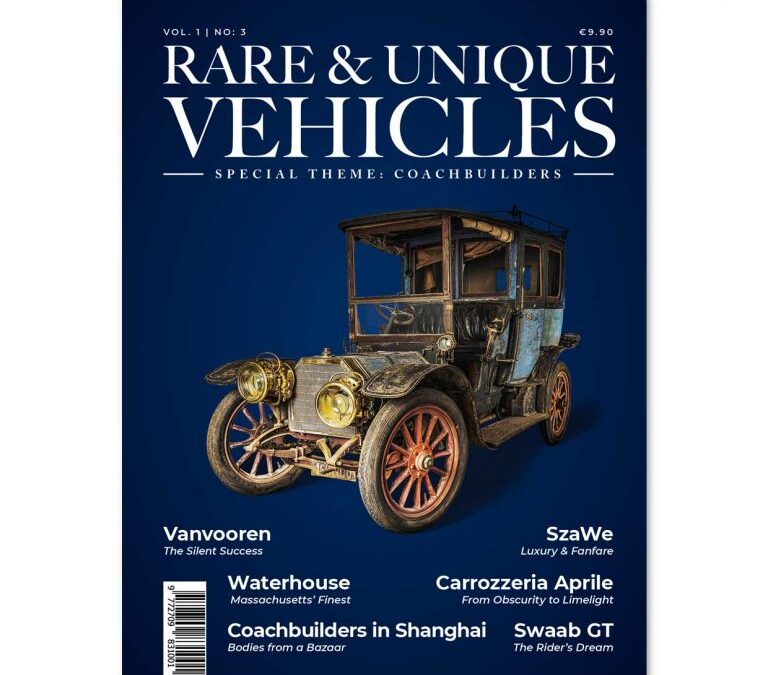
Rare & Unique Vehicles is an exciting new quarterly magazine, which aims to show and interpret the rarest and the most unique vehicles from the world of classic motoring.
Each issue will focus on a central theme, followed by a few anniversary-related features and a “Spin the Globe” section, which is a unique column, featuring unusual and interesting cars, motorcycles, trucks, buses, and other various transportation vehicles from around the world.
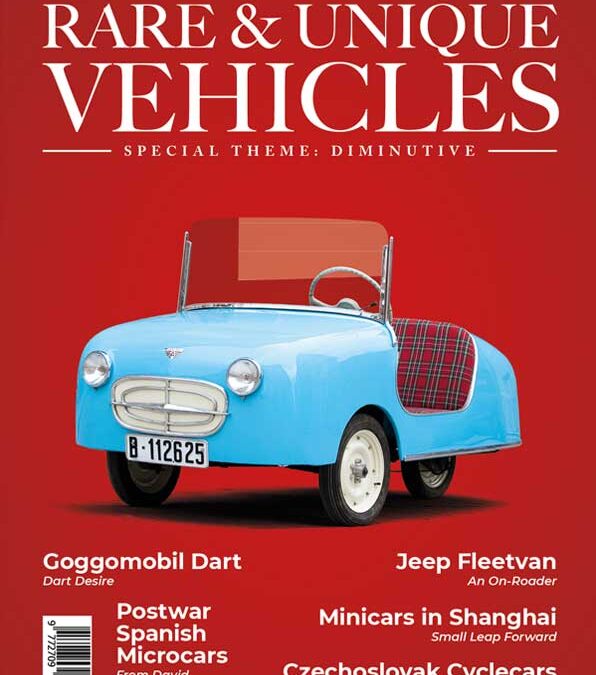
Rare & Unique Vehicles is an exciting new quarterly magazine, which aims to show and interpret the rarest and the most unique vehicles from the world of classic motoring.
Each issue will focus on a central theme, followed by a few anniversary-related features and a “Spin the Globe” section, which is a unique column, featuring unusual and interesting cars, motorcycles, trucks, buses, and other various transportation vehicles from around the world.
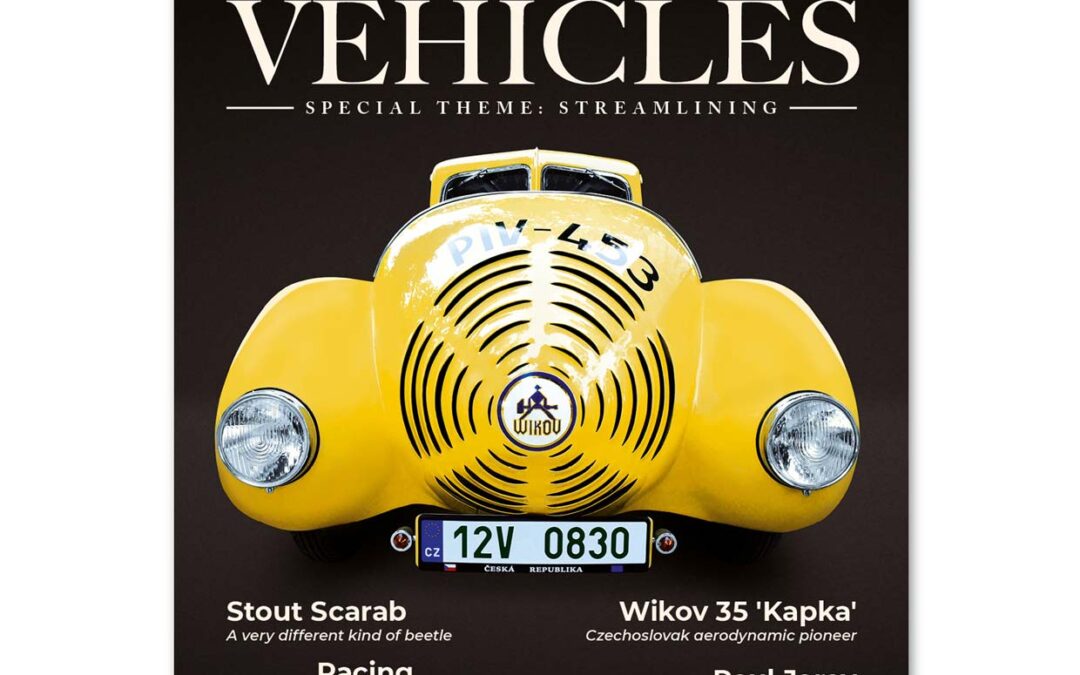
Rare & Unique Vehicles is an exciting new quarterly magazine, which aims to show and interpret the rarest and the most unique vehicles from the world of classic motoring.
Each issue will focus on a central theme, followed by a few anniversary-related features and a “Spin the Globe” section, which is a unique column, featuring unusual and interesting cars, motorcycles, trucks, buses, and other various transportation vehicles from around the world.
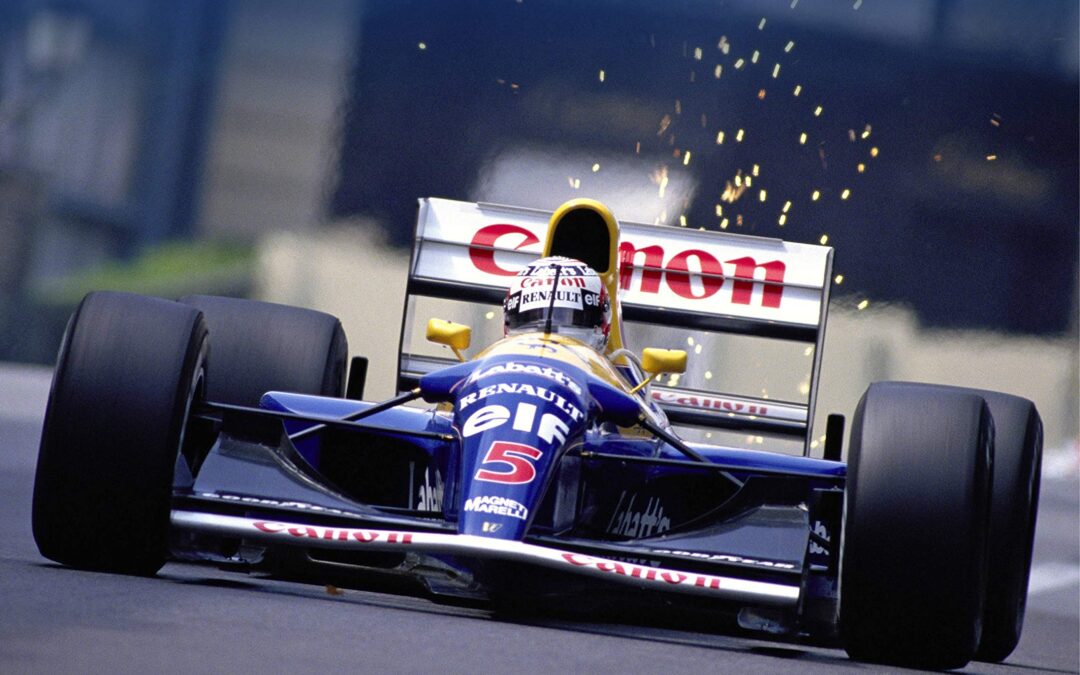
This instalment in Evro’s decade-by-decade series covering all Formula 1 cars and teams is devoted to a period when some normality seemed to return after the ground-effect and turbo excesses of the 1980s, except for one terrible weekend in the spring of 1994. The tragic deaths of Roland Ratzenberger and Ayrton Senna led to immense change with new emphasis on safety, including measures to slow down the cars and improve their structural strength, and numerous changes to circuits. In many ways Formula 1 became more as we recognise it today, especially as the decade’s dominant teams, McLaren and Williams, remain familiar.
- Year-by-year treatment explores each season in fascinating depth, running through the teams — and their various cars — in order of importance.
- McLaren: success for this team bookended the decade, delivering back-to-back titles for both Ayrton Senna (1990–91 with Honda engines) and Mika Häkkinen (1998–99 with Mercedes engines).
- Williams: as with McLaren, Renault-powered Williams cars brought four World Championship driver titles, for Nigel Mansell (1992), Alain Prost (1993), Damon Hill (1996) and Jacques Villeneuve (1997).
- Benetton: mid-decade, this British-based team won two titles for a sensational new talent, Michael Schumacher, powered by Ford in 1994 and by Renault in 1995.
- Ferrari: the longest-established marque, a participant in the World Championship ever since its inception in 1950, concluded a lean decade on an upbeat — and prescient — note by becoming 1999 Constructors’ Champions, with six Grand Prix wins that year.
- Other winning marques were few and far between, just Ligier (1996), Jordan (1998–99) and Stewart (1999).
- Besides the winning cars, there is always much fascination for fans in unsuccessful and obscure efforts, such as Andrea Moda and Venturi.
This authoritative and comprehensively illustrated book, which contains 475 color photos from the incredible archives of US-owned Motorsport Images, shows every type of car that raced or attempted to qualify for a race, presenting a comprehensive survey.

It has been 110 years since Alfa Romeo was founded. A name that has become synonymous with cars, so important has its presence been both industrially and in motorsport.
Over this long period of time, the celebrated Italian manufacturer has created cars that have become part of motoring history such as the 1900, the Giulietta, the Giulia and the Alfetta. At the same time, Alfa Romeo has enjoyed an outstanding sporting career, winning all of the most significant races and titles, among them the Mille Miglia, the 24 Hours of Le Mans, the Tourist Trophy and the Formula 1 World Championship.
This book, which first appeared in 2010 when Alfa Romeo (under the title ‘Alfa Romeo 1910-2010’) celebrated its first century, was written by the late Maurizio Tabucchi, an expert on the history of the marque, who passed away a few years ago. His work has now been updated to include all the latest models produced from 2017 to the present day such as the Stelvio and the Giulia Quadrifoglio Verde. The book has been completed with an examination of the Alfa Romeo marque’s return to competition in partnership with Sauber, demonstrating that its “sporting heart” is still beating as strongly as ever.
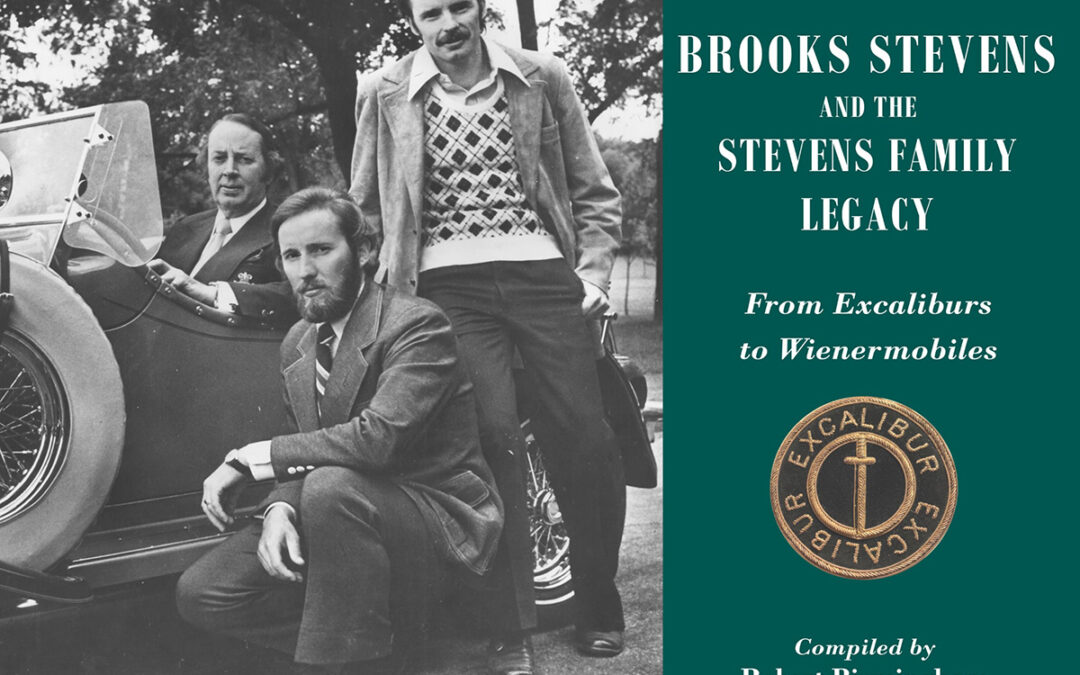
Over the years, Brooks Stevens’ amazing career as an innovative industrial designer has been recorded in countless articles and several books but now, for the first time, a comprehensive record of his love for automobiles is defined in Brooks Stevens and the Stevens Family Legacy – From Excaliburs to Wienermobiles.
Brooks’ sons, David and William “Steve” Stevens, played key roles from the mid-1960s through the 1980s and yet a great many people are unaware of their invaluable contributions, which are presented between these pages.
From his first car, a Ford Model T given to him by his father as a reward for accomplishing a challenge, Brooks and his associates designed a series of special vehicles commissioned by Studebaker and Kaiser Frazer, by wealthy industrials, entertainment stars, and friends. The first Excalibur J cars went on to win an SCCA National Championship in 1958, a series of passenger cars derived from the original 1964 Mercebaker, soon after to be renamed the Excalibur SS, and the infamous Oscar Mayer Wienermobiles.
Celebrities come and go throughout this history: entertainers Jackie Gleason and Phyllis Diller, successful race drivers Al Unser, Jr., Jim Jeffords, John Fitch, Jerry Hansen, Carl Haas, Fred Wacker, and Roger Penske, “father” of the Corvette Zora Arkus-Duntov, and also designer/constructors “Dutch” Darrin and John DeLorean are included. Prominent Milwaukee and Wisconsin socialites, industrialists, and business leaders are also present: William Woods Plankinton, Fred Miller, Fred Stratton, Sr., Dan Parker, Ralph Evinrude, and David Uihlein, to name but a few.
Color renderings designed to improve Road America’s facility during the early years and experiences at Le Mans, Sebring, and American sports car tracks from Watkins Glen in New York to Sears Point in California and dozens of others in between are interesting. Excalibur race results are recorded by date.
There is much more of interest for even the occasional classic automobile buff, including the history, from its roots in earlier buildings, to opening night of the Brooks Stevens Automotive Museum in Mequon, Wisconsin, right on up to its eventual closing.
Full color with dozens of photos.

The car world is full of fascinating characters, but few have a story to tell quite as remarkable and inspirational as Tom Hartley.
Walking out of school at the age of 11, unable to read or write, Hartley set up his own business buying and selling cars. From that moment, he defied logic and ripped up the rule book on his way to the top. Today he runs one of the most successful independent family run performance and luxury car businesses in the world. He has built up an unrivaled reputation as “The Dealmaker.”
Tom has been at the top for over 40 years, survived and thrived through four recessions, and overcome three life threatening illnesses. In his own brutally honest words, Hartley tells his gripping story of a boy from a traditional Romany family who swapped the classroom for the cut-throat world of Glasgow’s car auctions, buying and selling his first car at the age of 12. Having decided to drive himself around illegally, he was only 15 when he had his first car crash, and they don’t come more spectacular than writing off a Ferrari Dino – nothing has ever been normal in the world of Tom Hartley!
Hartley had made his first million by the age of 17, but soon suffered major setbacks as his business went bust, and he found himself at risk of losing his sight without major surgery. Hartley started all over again, living in a mobile home with his wife and working from the back of a car. He had gone from hero to zero, but his burning desire to be the best saw him climb his way back to the top. His ability to clinch deals in some of the most bizarre places has become legendary, like buying a car in a sauna, while stuck in a traffic jam on a motorway, and even in a swimming pool!
Family has played a key part in the Tom Hartley story, his wife has been at his side all the way, and his two sons have followed closely in their father’s footsteps. Indeed Tom’s belief in family is one of the inspiring messages that comes through.
Hartley’s inspirational story is about the unshakeable belief in his own abilities, from a precocious schoolboy who had a dream, and then through sheer hard work and a burning desire to make the dream come true. This is not just a book for car enthusiasts but for anyone who has dared to dream. It’s a story that will inspire and motivate, and proves you can make the wildest dream come true if you want it badly enough.
Tom’s remarkable story is written with the collaboration of journalist Ken Gibson, for 24 years, award-winning Motoring Editor of The Sun newspaper.
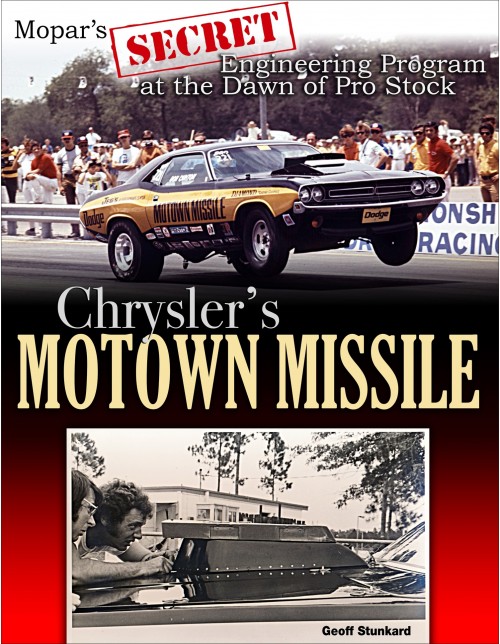
Relive Mopar’s skunkworks racing team and its rise to dominance in this fascinating history!
The drama of 1970s Chrysler Pro Stock drag racing unfolds in this new book, which focuses on the racing and technological evolution of the legendary Motown Missile and Mopar Missile racing programs from 1970 to 1977. Unequaled by any other drag racing development program, this was a huge undertaking in term of time, money, and effort.
The 1970s saw great change in Detroit and in auto racing, with Pro Stock being a huge draw for fans. Chrysler racing historian and author Geoff Stunkard presents a chronological recollection, drawing from many interviews and summaries of the actual technical efforts that the factory accomplished and includes both rare/unpublished technical and personal images from the team members and some of the most dramatic images taken by the sport’s best photographers.
From the earliest days of owner/engine builder Ted Spehar, factory engineer Tom Hoover, and driver Don Carlton, the narrative is a colorful look at the team’s inner workings, programs, victories, and even defeats. Set against a backdrop of characters like Bill Grumpy Jenkins, Dandy Dick Landy, and Dyno Don Nicholson, Carlton’s driving prowess had few equals. Indeed, called by one period scribe as a cyborg, the likeable pilot would pay the ultimate price as a drag racing driver. From the Challengers and `Cuda to the Demons and Colts, the book showcases the cars that made Chrysler so much a part of this racing era, as well as Ted Spehar’s never-before-revealed information on the 1970s Pro Stock engine program.

For almost a century, Carrozzeria Bertone has created some of the most sensational models in automotive history. The extraordinary concept cars such as the B.A.T.Mobiles, the Testudo, the Canguro, the Carabo and the futuristic Stratos – to mention but a few – were joined by iconic sports cars, such as the numerous Lamborghini Miuras, Marzals, Espadas and Countachs and the Alfa Romeo Montreal, as well as more “down-to-earth” cars that went into mass production. This last category features the Alfa Romeo Giulietta Sprint, the Fiat X1/9 and the Nuova Mini Innocenti along with the many Citroëns designed between the late 1980s and early 2000s. These are just a few of the models featured in the extensive and varied Bertone catalogue to which great designers of the calibre of Giorgetto Giugiaro and Marcello Gandini have contributed.
In-depth historical contextualization by Luciano Greggio, a great connoisseur of the Bertone marque, and a magnificent collection of photographs make up this latest volume in the series Masterpieces of Style.

The car industry and the way in which cars are created have changed beyond all recognition over the last half-century. Automotive styling was once the grudging afterthought when the engineers had finished their work. Now, following a short flirtation with exotic Italian design houses, it has evolved into sophisticated design carried out by multitalented in-house teams honing carefully crafted brand identities.
One of the visionary designers at the forefront of that revolution has been Patrick le Quément. Most widely acclaimed for his 22 years in charge of Renault Design, resulting in such standout models as the Twingo, Scénic and Avantime, le Quément has enjoyed a 50-year career that has also taken in Simca, Ford and Volkswagen-Audi. In his foreword to the book, Stephen Bayley calls le Quément ‘perhaps the very most original designer working in the conservative car business at the turn of the millennium’. Some 60 million cars across the world now bear the unmistakable stamp of le Quément.
Design: Between the Lines is not a straightforward autobiography; rather, le Quément charts his journey through five decades of thoughts, actions, failures and successes. He offers fascinating commentaries on design and the creative process, and on some of the extraordinary automotive brands that make up our shared cultural heritage. As Bayley notes, for le Quément, design is ‘as much a matter of thinking as a matter of drawing’. On a broader, more philosophical level, le Quément also shares his views about life in general and that remarkable contraption called ‘the automobile’, which has so influenced the lives of millions of people the world over from the late 1800s to the present day.
Presented as a series of 50 brief essays or ‘perspectives’, le Quément’s thoughtful and astute observations from the street, from the design studio and from his seat in the boardroom give the reader a penetrating and often amusing insight into the high-level workings of a global industry, its triumphs and tragedies, and the foibles of the decision-makers responsible for running it. A lively complementary text by the automotive journalist Stéphane Geffray accompanies each of le Quément’s perspectives, and illustrations are provided by the automobile designer Gernot Bracht. Design: Between the Lines will appeal to all motoring fans and enthusiasts of good design. As Chris Bangle, the former Director of BMW Design, remarks: ‘Few car designers have had a career so filled with innovative successes that they have inspired a whole industry; fewer still have the skills to share it. Engaging and revealing, Patrick relates his personal experience and deep knowledge of car design in a very enjoyable manner.’

The definitive, fully illustrated celebration of an auto manufacturer that paved its own way by going off-road is now updated to celebrate Jeep’s 80th anniversary.
Few American vehicles, or vehicles made anywhere else in the world for that matter, are as universally iconic as the Jeep. From olive drab WWII military relics to the beloved Wrangler with its rear-mounted spare tire, open-air design, and telltale roll cage, the Jeep is a true classic.
In Jeep: Eight Decades from Willys to Wrangler, automotive writer Patrick R. Foster chronicles Jeep vehicle design and production from the beginning of World War II to present. Beginning with the Jeep as a crucial component of the American war fleet, Foster expertly recounts the corporate shifts, financial struggles and successes, close calls, and, above all, the enduring machines that have carried Jeep from the early 1940s to its triumphant role as a modern-day embodiment of American perseverance.
More than 200 color and black-and-white historical photos and period advertisements complement his expertly written narrative of Jeep’s entire history, now updated to include five years of new model editions and prototypes, its return to the pickup market, and recent stunning marketplace successes. The resulting book reminds us that sometimes the road less traveled was just waiting for the right truck.

Nothing is new under the sun and classic cars books come and go. But here, instead of a heavy, large, glossy book of classic car images and details destined to stay on a shelf, is something new. This book is designed to be read as a companion, a book that can go in the car or on a ‘plane, and which can be read in full, or dipped into anywhere for a classic car fix. Old stories and new details are presented and cover all eras of our cars.
Gathered here is a compilation of the author’s published and unpublished adventures and opinions about the design and the driving of some of the greatest cars in motoring history. From ‘vintagent’ to ‘modern classic’, pristine to oily-rag, up hill, down dale and across continents, award-winning motoring author, designer and serial classic car owner, Lance Cole, charts the great classic car enthusiasm in a series of engaging essays about cars, car design and the men that made the motor industry.
From tales of Malcolm Sayer to Bedelia, and of BMW, Jaguar, Bugatti and Porsche, to tales of old Saabs and rusty Citroens, classic car life is here. Erik Carlsson, Jacques Gerin, Giovanni Michelotti and Innes Ireland are just a few of the names that can be found in these pages. From design to driving, here is a book that is a classic car adventure.
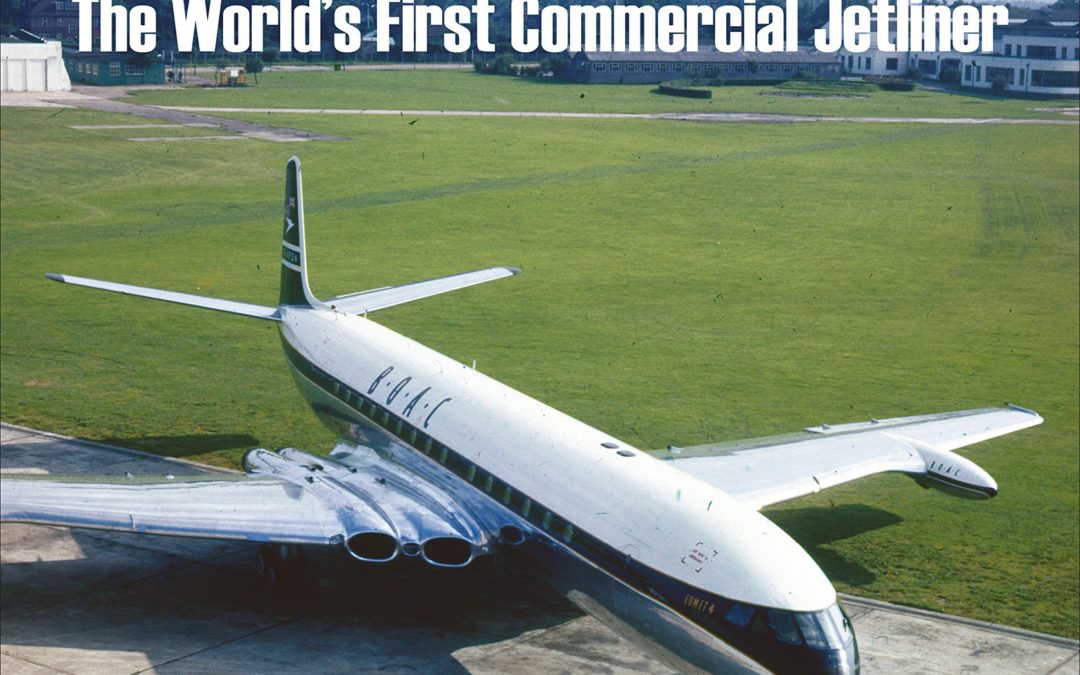
The world got a little smaller in July 1949 when the first jet-powered airliner took to the skies barely four years after the end of the Second World War.Not only was the de Havilland Comet 1 was a lot faster than previous airliners, it could fly higher and further. It was packed with new technology but, perhaps most importantly for those early passengers, it was a quiet, luxurious and even pleasant experience, something that could never be said for the noisy piston-engine aircraft that came before.The Comet’s leadership in jet travel for the future was assured until aircraft began crashing. The first ones were put down to pilot error but two disastrous events in 1954 grounded the fleet and Britain’s advantage over the rest of the world was lost. Boeing caught up with its ubiquitous 707 and the Comet was destined to become but a memory.However, rising from the ashes came a new Comet – one that was bigger and more powerful than before and designed for completely different roles. Where the first Comets had provided an expensive and plush way to travel for the rich few, the new Comet 4s carried more passengers to a multitude of destinations inevitably becoming key carriers for the early package holidaymakers. At the same time they became vital strategic transports for the RAF as the British Empire receded.This book tells the full story of the world’s first jet-powered airliner, from its remarkable beginnings, through its early flight trials program to its entry into service. The type’s military career is also covered, as is its construction; also included in this volume are details of the numerous variants produced and those still surviving as exhibits today. There are also twenty-four superb artworks by world-renowned aviation illustrator Juanita Franzi.




















